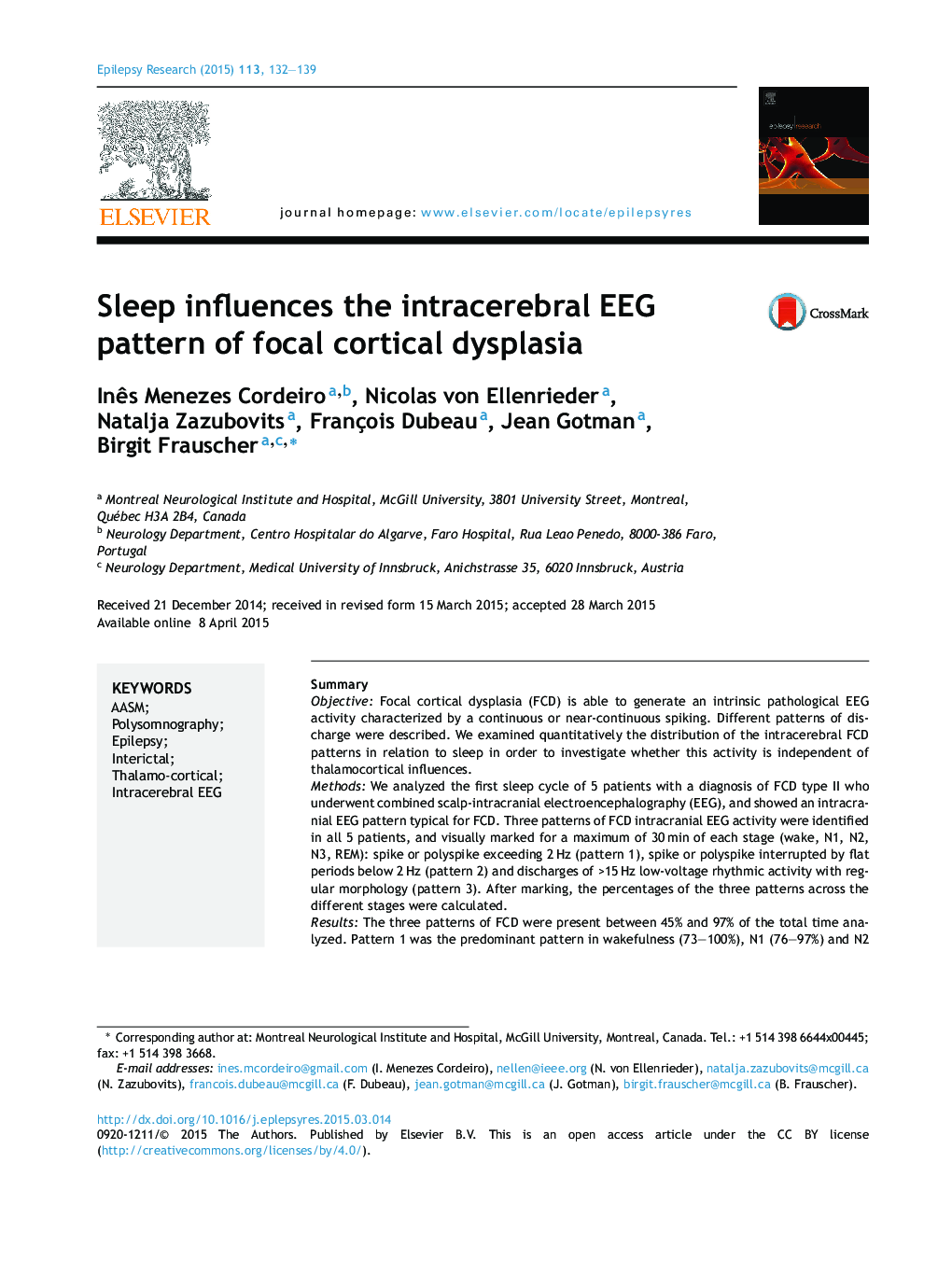| کد مقاله | کد نشریه | سال انتشار | مقاله انگلیسی | نسخه تمام متن |
|---|---|---|---|---|
| 6015414 | 1579910 | 2015 | 8 صفحه PDF | دانلود رایگان |

- We analyze the distribution of intracerebral EEG patterns of FCD in relation to sleep.
- FCD interictal EEG patterns are present between 45% and 97% of the time analyzed.
- Despite almost continuous spiking, sleep is an important modulator of FCD EEG patterns.
- This suggests that dysplastic tissue is under thalamocortical control.
SummaryObjectiveFocal cortical dysplasia (FCD) is able to generate an intrinsic pathological EEG activity characterized by a continuous or near-continuous spiking. Different patterns of discharge were described. We examined quantitatively the distribution of the intracerebral FCD patterns in relation to sleep in order to investigate whether this activity is independent of thalamocortical influences.MethodsWe analyzed the first sleep cycle of 5 patients with a diagnosis of FCD type II who underwent combined scalp-intracranial electroencephalography (EEG), and showed an intracranial EEG pattern typical for FCD. Three patterns of FCD intracranial EEG activity were identified in all 5 patients, and visually marked for a maximum of 30Â min of each stage (wake, N1, N2, N3, REM): spike or polyspike exceeding 2Â Hz (pattern 1), spike or polyspike interrupted by flat periods below 2Â Hz (pattern 2) and discharges of >15Â Hz low-voltage rhythmic activity with regular morphology (pattern 3). After marking, the percentages of the three patterns across the different stages were calculated.ResultsThe three patterns of FCD were present between 45% and 97% of the total time analyzed. Pattern 1 was the predominant pattern in wakefulness (73-100%), N1 (76-97%) and N2 (58-88.5%) in all patients, and in REM in 4 of 5 patients (91-100%). During N2 and N3, there was an increase in pattern 2 in all patients, becoming the predominant pattern in 3 of the 5 patients during N3 (63-89%). Pattern 3 was rare and only sporadically observed during N2 and N3. Wakefulness and REM sleep showed a similar pattern (pattern 1) with a slight amplitude reduction in REM sleep.SignificanceDespite the presence of an almost continuous discharge, sleep is an important modulator of the pathological EEG patterns found in FCD type II. This might suggest that dysplastic tissue is influenced by the thalamo-cortical control mechanisms involved in the generation of sleep.
Journal: Epilepsy Research - Volume 113, July 2015, Pages 132-139